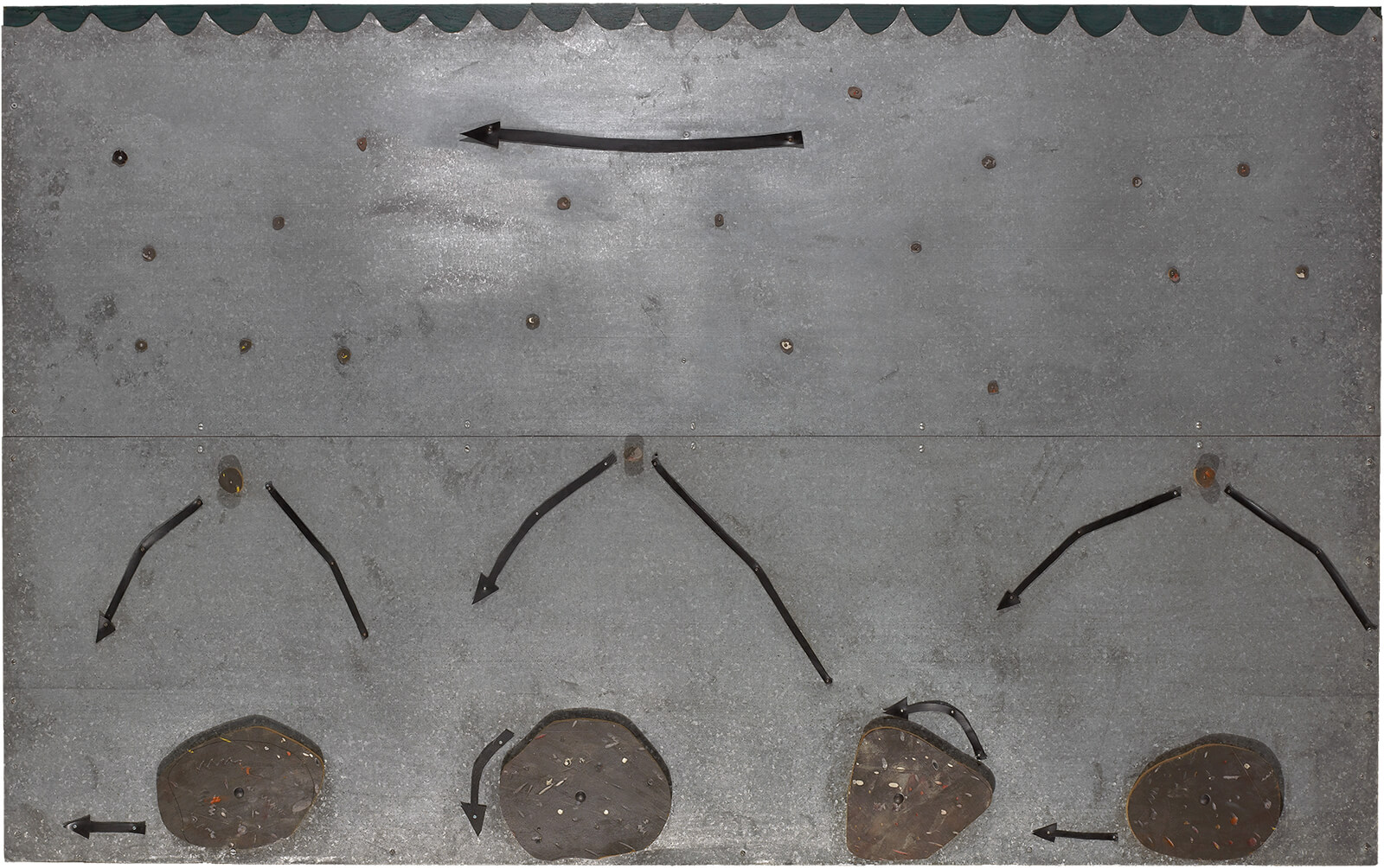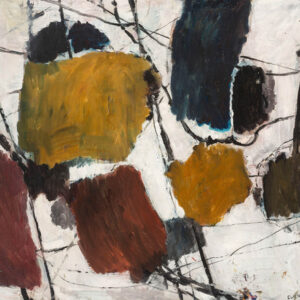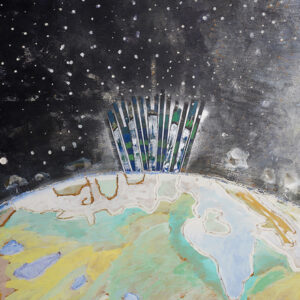Rocks Moving in the Current of a Stream 1971

Paterson Ewen, Rocks Moving in the Current of a Stream, 1971
Steel screws and bolts and nuts, rubber, linoleum, plywood, acrylic paint, galvanized steel, 153.3 x 245.3 cm
Art Gallery of Ontario, Toronto
Rocks Moving in the Current of a Stream embraces a delicious materiality. Here a sheet of galvanized steel represents the water, its surface semi-reflective like the surface of water. Ewen has cut the top edge of the steel into waves that look like saw blades, possibly a reference to his use of them in Blackout, 1960. Out of linoleum he has cut round pieces like stones to cleverly represent the bottom or bed of the river. And he indicates the movement of the rocks, and the current and undercurrent, with directional arrows like the ones found in scientific diagrams. The effect recalls the whimsical landscapes of Paul Klee (1879–1940), such as Possibilities at Sea, 1932.

Since discovering his interest in natural phenomena with the series Lifestream, 1958–71, Ewen explained: “I began reading. I got all kinds of amateur books and old textbooks about phenomena. How rain falls and how lightning works, clouds, eclipses and waves. I began to get the feeling as I read that what we usually call the more simple things are immensely complicated so I just accepted my limitations and put down the parts of these happenings that were for me fun to do.”
Experimental pieces, such as Rocks Moving in the Current of a Stream, are sometimes overlooked in studies of Paterson Ewen’s art. Whereas the work Ewen created in Montreal was clearly influenced by the dominant ideas of the Automatistes, the Plasticiens, and the Abstract Expressionists, the work he produced once he moved to London was more playful and innovative. By that time, he was feeling confined by the formal tradition of painting and “bored” with his own work. Local artists such as Greg Curnoe (1936–1992), Murray Favro (b. 1940), Ron Martin (b. 1943), and Don Bonham (1940–2014) were known for their heterogeneous and eclectic interests, and they likely motivated Ewen to reject the canvas and explore other media.
Ewen remained first and foremost a painter, and his play with non-art materials, though significant, never really moved beyond two dimensions. However, this piece marks a definite shift from painting on canvas. He would continue to work with plywood and traces of galvanized steel and other metals, even incorporating new materials such as livestock fencing and lead in the 1990s.

 About the Author
About the Author
 More Online Art Books
More Online Art Books
 Acknowledgements
Acknowledgements